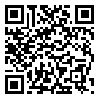Accepted article
Back to the articles list |
Back to browse issues page
1- Department of Rehabilitation Management, University of Social Welfare and Rehabilitation Sciences, Tehran, Iran.
2- Pediatric Neurorehabilitation Research center, University of Social Welfare and Rehabilitation Sciences, Tehran, Iran
3- Department of Biostatistics, School of Public Health, Iran University of Medical Sciences, Tehran, Iran
2- Pediatric Neurorehabilitation Research center, University of Social Welfare and Rehabilitation Sciences, Tehran, Iran
3- Department of Biostatistics, School of Public Health, Iran University of Medical Sciences, Tehran, Iran
Abstract: (85 Views)
Objectives: Children with disabilities need assistive technology (AT) to explore surroundings, participate in activities and gain developmental skills. This study aimed to assess AT needs and barriers for accessibility for these children.
Methods: The participants were 217 children with disabilities aged 6-12 years, randomly selected from the Chaharmahal & Bakhtiari Welfare Organization’s registration-list in 2022. After obtaining informed consent from their parents, data were gathered by phone interview using the “rapid Assessment of Assistive Technology” (rATA) tool of the WHO.
Results: Among the 217 participants, 108 (49.8%) were using assistive technologies and 102 (47%) had some unmet needs. Of the 55 assistive technology devices named in the rATA, only 14 were used by the children. The most commonly used devices were hearing aids, glasses, wheelchairs. Unmet needs for ‘chairs for bath/toilet’, ‘wheelchairs’, and ‘therapeutic footwear’ accounted for 50% of 132 unmet AT needs. The most common reasons for not having assistive technologies were lack of financial resources (52%) and lack of knowledge about ATs (30.1%). Most of the clients were satisfied with AT-use training (92.3%), but only 20.2% were satisfied with AT device repair-services.
Discussion: The study highlights the need to focus on improving AT device repair-services, overcoming financial challenges, and increasing parental knowledge about ATs as the most prevalent barriers to using ATs. Developing a child-specific version of the rATA tool that includes questions about education and play engagement AT needs is suggested for better estimation of AT needs for children with disabilities in the future.
Methods: The participants were 217 children with disabilities aged 6-12 years, randomly selected from the Chaharmahal & Bakhtiari Welfare Organization’s registration-list in 2022. After obtaining informed consent from their parents, data were gathered by phone interview using the “rapid Assessment of Assistive Technology” (rATA) tool of the WHO.
Results: Among the 217 participants, 108 (49.8%) were using assistive technologies and 102 (47%) had some unmet needs. Of the 55 assistive technology devices named in the rATA, only 14 were used by the children. The most commonly used devices were hearing aids, glasses, wheelchairs. Unmet needs for ‘chairs for bath/toilet’, ‘wheelchairs’, and ‘therapeutic footwear’ accounted for 50% of 132 unmet AT needs. The most common reasons for not having assistive technologies were lack of financial resources (52%) and lack of knowledge about ATs (30.1%). Most of the clients were satisfied with AT-use training (92.3%), but only 20.2% were satisfied with AT device repair-services.
Discussion: The study highlights the need to focus on improving AT device repair-services, overcoming financial challenges, and increasing parental knowledge about ATs as the most prevalent barriers to using ATs. Developing a child-specific version of the rATA tool that includes questions about education and play engagement AT needs is suggested for better estimation of AT needs for children with disabilities in the future.
Article type: Original Research Articles |
Subject:
Social Welfare
Received: 2023/10/30 | Accepted: 2024/01/28
Received: 2023/10/30 | Accepted: 2024/01/28
Send email to the article author
| Rights and permissions | |
 |
This work is licensed under a Creative Commons Attribution-NonCommercial 4.0 International License. |





